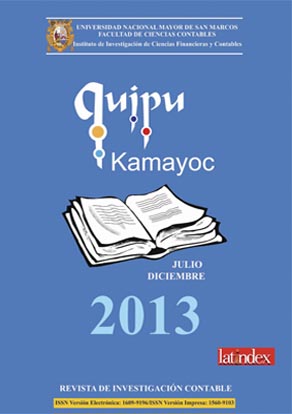BENEFIC AND PROBLEMS IN THE APLICATION OF THE INTERNATIONALS RULES OF AUDIT IN MEXICO
DOI:
https://doi.org/10.15381/quipu.v21i40.6315Keywords:
Información financiera, auditoría, Normas Internacionales de Auditoría.Abstract
The adoption of the ISAs, to Mexico and other countries, has benefits and problems that are seen as areas of opportunity, such a regulation is considered a worldwide standard, with a greater degree of rigor and universality, which aims to contribute to the global financial stability and offset the volatility that accompanies globalization, but also requires an assessment of regulations and legislation in the country to turn, allow the full implementation of these standards. The NIA currently given to the audit, greater confidence in Mexican law, since it sustains bajonormas reliability and certainty, that the financial statements generated by companies, are regulated uniformly, which brings logical greater acceptance of the data they contain, therefore, allow the comparison of financial reporting in an international environment, which in turn leads each generates more promotion of foreign investment in the country, in a word the harmonization of accounting field audit and internationally, and we talk to has a structured methodology for the correct development of the audit.
Downloads
Downloads
Published
Issue
Section
License
Copyright (c) 2013 Dorie Cruz Ramírez, Suly Sendy Pérez Castañeda, Pilar Heriberto Moreno Uribe

This work is licensed under a Creative Commons Attribution-NonCommercial-ShareAlike 4.0 International License.
AUTHORS RETAIN THEIR RIGHTS:
a. Authors retain their trade mark rights and patent, and also on any process or procedure described in the article.
b. Authors retain their right to share, copy, distribute, perform and publicly communicate their article (eg, to place their article in an institutional repository or publish it in a book), with an acknowledgment of its initial publication in Quipukamayoc .
c. Authors retain theirs right to make a subsequent publication of their work, to use the article or any part thereof (eg a compilation of his papers, lecture notes, thesis, or a book), always indicating the source of publication (the originator of the work, journal, volume, number and date).






